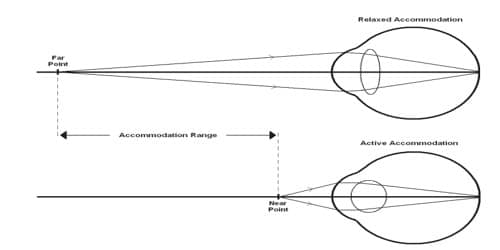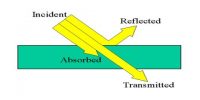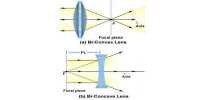Near Point
The nearest point to the eye at which an object can be brought into clear focus by accommodation is called the near point of vision. It is the point nearest the eye at which an object is accurately focused on the retina at full accommodation
The nearest point recedes throughout life. Slowly at first and then rapidly with the advancing age, from approximately 9 cm at age 10 to approximately 83 cm at age 60. This recession is due principally to increase the hardness of the lens, with a resulting loss of accommodation. So, the near point of the eye is the lowest distance of the object from the eye, which can be seen definitely without strain. For a regular human eye, this distance is 25 cm.

Fig: Accommodation of eye lens (a) Focusing parallel rays from infinity i.e., far point (b) Focusing rays from near point N.
Far point
The far point is the point at which an object must be placed along the optical axis of the eye for its image to be focused on the retina when the eye is not accommodating. In the normal emmetropic eye, parallel rays are focused on the retina from infinity without accommodation. Far point is 6M 20ft. Actually, the far point of the normal human eye is infinity.
The near point is the nearby something can be so that the individual can still see it plainly. The far point is the utmost away something can be so that the person can still see it.














